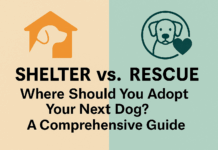Last Updated on March 26, 2024 by Dogs Vets
For people facing disabilities or age-related mobility limitations, simply walking a rambunctious dog poses genuine physical risks. Yet, for many, losing the comfort and companionship of a beloved pet feels equally unbearable.
Striking an optimal balance requires securing responsible outside assistance through Validation and community resources. With the right planning and partnership, people can enjoy daily life with pets while remaining safe.
Understanding Available Assistance Programs
Several programs help owners unable to walk dogs gain accountable support independently:
Government Financial Assistance
Some municipal governments provide stipends to subsidize professional dog walking costs, recognizing companion pets’ mental health benefits. Local Department of Health and Human Services agencies assess eligibility. Funding suffices for essential 20-minute walks one or two times weekly.
Nonprofit Organization Support
Various nonprofit groups coordinate volunteer dog walking assistance for senior, disabled, or Veteran pet owners through established community partnerships. Scheduling flexibility and visit frequency varies across programs depending on volunteer availability.
Privately Sourced Solutions
Seeking regular, dependable support accessing privately contracted dog walkers often delivers the highest reliability. Services deliver daily exercise with customizable care catering to unique mobility issues. However, total private funding burdens may prove cost-prohibitive for some families.
NDIS Participant-Managed Plans
For those medically eligible under NDIS dog walking guidelines, individually allocated funding enables hiring caregivers like dog walkers. Customized participant-managed plans allow direct sourcing of providers through marketplaces and then claim payment over invoices. This hands-on coordination control ensures ideal caregiver matching while covering substantial costs.
Assessing Assistance Needs Considerations
Seeking supplemental dog walking assistance constitutes no small decision. Owners owe themselves honest self-appraisal to validate when additional resources prove truly necessary.
Gauging Physical Mobility and Safety
If attempting to walk a robust and excited dog risks genuine falls or chronic pain flares after nominal exertion, assistance secures everyone’s wellbeing. Be realistic about physical limitations needing accommodation.
Evaluating Frequency Needs
Consider dogs’ baseline activity requirements and adjust accordingly. While all dogs benefit from daily exercise, smaller or older pets may sustain three shorter walks weekly—match support levels to essential exercise needs.
Committing to Ongoing Partnership
Assistance works best as a regular habit, not a sporadic shortcut. Make sure to identify reliable solutions fitting long-term lifestyle needs. The dog’s welfare depends on consistent care.
Take an objective accounting of current mobility, pain levels, and activity obligations. If gaps emerge, jeopardizing either the pet or owner’s health, then assistance provides the lifeline to preserve cherished bonds.
Screening Dog Walkers for Optimal Safety and Skillsets
Not all dog walkers offer equal competence. When soliciting candidate assistance, ask targeted questions assessing requisite capabilities.
Core Handling Experience
- How long have you walked dogs professionally?
- Have you completed formal dog obedience trainer certification?
- What size/breed experience do you have? Have you handled mobility assistance dogs?
Adaptability and Customization Skills
- How would you adapt walking approaches to accommodate endurance-related medical conditions like chronic pain or lung disease?
- How do you reinforce good leash skills in dogs needing reminders on proper etiquette?
- How would you stimulate high-energy working breeds needing more vigorous exercise?
Reliability and Responsiveness
- Can you provide multiple references validating reliable service from past clients?
- Do you offer guaranteed on-time arrival for scheduled walks?
- How quickly could you respond to urgent same-day dog walking requests if my mobility abruptly changes?
Ideally, candidates showcase expertise tailored to handle mobility limitation cases with responsive professionalism. Validate through reference checks. Meet finalist walkers first before committing longer-term.
Onboarding Preferred Dog Walkers
Once the ideal assistant secures selection, take steps to facilitate seamless onboarding. Smooth transitions limit confusion, leaving dogs—and owners—at ease.
Share Critical Pet Information Sheets
Create profiles for each dog detailing basics like age, breed, and gender alongside context on rescue background, commands taught, and quirks that influence temperament. Note medical conditions and mobility limitations impacting walking paces and distance. Logging this data equips walkers appropriately.
Demonstrate Unique Equipment
If dogs utilize specialty gear for stability assistance, such as harnesses, boots, or allergy medication, demonstrate proper fitting and handling. Confirm walkers reuse gear consistently to prevent skin irritation. Refresh on usage if adjustments are required.
Map Out Custom Walking Routes
With the new walker, you traverse planned walking routes in your neighborhood, calibrating distances and pacing to human and canine mobility levels. Identify any stops like hydration fountains or relief areas.
Introduce Commonly Encountered Neighbors
Strategically coordinate initial joint walks when familiar neighbor dogs or people frequently seen are likely present. This demystifies potentially startling encounters on solo walks later to prevent reactive behavior. Preemptively socialize walkers into the community.
Celebrate Success with Favorite Games
End each onboarding walk positively reinforcing good behavior and rapport over favorite fetch toys or treats. This incentivizes adaption, forging cooperative pack mentalities critical to ongoing safety.
While exhaustively prepping assistants consumes upfront effort, confidently conveyed expectations ease transitions for all.
Providing Clear Activity Guidelines
Prevent misunderstanding by detailing individual dog walking regimens aligned to veterinary guidance. Put standards in writing.
Duration and Pacing
- Define each pet’s target walk distances or durations responsive to respective energy levels and medical needs.
- Specify any signs of fatigue like limping or panting warranting abbreviated route returns home.
Gear Protocols
Apply the same equipment daily. Check harnesses and collars for irritation. Carry waste bags, portable water, and first aid kits on outings.
Enrichment Integration
Note favorite games, toys, and socialization stop enriching exercises mentally and physically. Incorporate these habitually.
Hydration and Rest Needs
Highlight when to pause for water breaks. Detail post-walk cooling down periods before leaving dogs unattended.
Setting mutually understood care standards provides consistency, which benefits elderly, anxious, or medically fragile pets who thrive on schedule stability.
Leveraging Supplemental Oversight Adds Reassurance
Besides professional dog walking assistance, additional oversight mechanisms further dispel worries.
Automated Activity Tracking
Fitness trackers worn on collars record walk distances, durations, and frequency data with time stamps. This confirms care alignment without direct hovering.
Pet Cameras
Non-invasive cameras provide live peeks into home activity plus talkback features. The sampling video confirms pets are moving comfortably and appearing content.
Coordinated Caregiver Check-Ins
For multi-person households, coordinate ancillary family or roommates to verify occasionally that walker visits occur in a timely manner and that pets appear healthy and content afterward.
Review Video Walk Captures
Some advanced pet cameras enable the filming of actual outdoor walk footage. Review sample videos highlighting gear use, walker engagement, and pet behavior clues. Provide feedback addressing any needed technique adjustments.
By mixing professional assistance and selective technology aids, comprehensive care support scaffolds elderly, disabled, or homebound owners in long-term safeguarding their pets’ daily well-being. Protecting cherished relationships sustains immeasurable emotional health.
Fact Check
We strive to provide the latest valuable information for pet lovers with accuracy and fairness. If you would like to add to this post or advertise with us, don’t hesitate to reach us. If you see something that doesn’t look right, contact us!

















